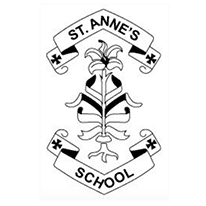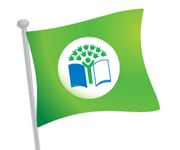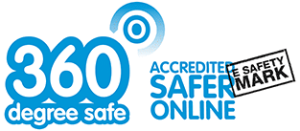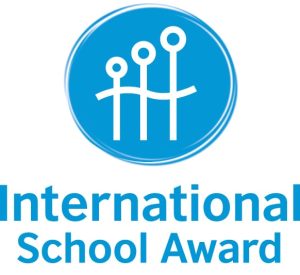Computing Intent
Technology is an integral part of our daily lives. Therefore, it is crucial that our children’s learning incorporates mobile devices such as iPads, laptops and robotics when they are learning in their formative years. Our school and all of its stakeholders will collaborate and prepare our pupils for their role in society as lifelong learners working and socialising safely in the digital world. We want our children achieve their very best and aspire to reach their potential and learn that they are connected in the very widest way to their community.
Good teaching enriches and enables learning. Without excellence, enjoyment, and enrichment, we believe that pupils will not have the engagement or endurance to complete tasks and solve problems. We will deliver high quality computing lessons using technology, cross curricular links and projects rooted in real life. Similarly, we want to maximise the power that technology has to publish our work and share our learning with different, genuine audiences. We envision an adaptive, bespoke curriculum delivered by confident teachers. This curriculum, effectively resourced, allows our pupils to make meaningful connections and make the very best of their individual learning styles, skills and talents. Our school aspires for our learners to be digitally literate, creative, and capable of computational thinking in a variety of contexts.
Thanks in no small part to social media and the Internet, we now have more than one environment in which to work. Our pupils can work remotely and in the classroom. Consequently, we need our pupils to feel safe and adept to work in either reality. As a Rights Respecting School, we are mindful of Article 17 and a child’s right to access information, however we must empower and protect our children. As a result of quality teaching and learning; beginning with our very youngest children until they progress to the next phase of their education, we want to create a collaborative, respectful technology- rich environment that nurtures our children’s growth. Most importantly we want our children to interact within these different and ever-changing environments with integrity and adhere to the associated Values that are foundation of our school ethos.
We envision a computing curriculum that enriches, challenges, and supports our minds to learn whilst enables us to interact and create so that we use our hearts to care.
At. St. Anne’s, we follow a ‘knowledge-engaged’ curriculum and we believe that Computing is an essential part of the National Curriculum. Therefore, we have purposely designed a bespoke Computing curriculum linked to our key texts. Computing is part of our ever- changing life. From traffic lights to ATM machines, computer technology surrounds us. If our children are to live up to high personal expectations and see their ambitions and aspirations come to fruition, it is vital that they have a secure understanding of the principals of information and computation. The National Curriculum defines three clear aspects of the Computing Curriculum: Computer Science (CS), Information Technology (IT) and Digital Literacy (DL). Our children are given the opportunity to develop their knowledge and understanding in each of the Curriculum area from the Foundation Stage to Year 6.
The key strands of the Computing Curriculum will be interwoven through our text-led, enquiry-based approach, addressed through our operational teachings of information technologies and digital science to provide children with key programming and robotic knowledge, whilst also equipping them with the basic computing skills they may need for jobs of the future. It is understood that many future jobs will require knowledge and skills taught through computing. We will provide the foundation to motivate children’s aspirations to be the computer programmers and web developers of the future. We aim to build on the children’s understanding of computing and the digital world and help them put this knowledge to use. Diversity in Computing can be explored through research, children can explore a diverse way of life through many applications online such as google maps and the ability to use software to translate and explore language, thus, helping them make sense of the world around. Computer science will extend children’s communication, language and literacy skills, introduce them to new vocabulary and help them to become digitally literate. Computing holds the key to a universal language that, when unlocked and comprehended, holds infinite opportunities.
We at St. Anne’s appreciate that with new technology comes new dangers. We will ensure our children recognise the importance of safe, responsible and respectful computer use. We will be assiduous and diligent in conveying the importance of keeping personal information private, ensuring the children know who and where they can go to for help with concerns about content and contact on the internet or other online technologies.
Purpose of Study
A high-quality computing education equips pupils to use computational thinking and creativity to understand and change the world. Computing has clear links with mathematics, science, and design and technology, and provides insights into both natural and artificial systems. The core of computing is computer science, in which pupils are taught the principles of information and computation, how digital systems work, and how to put this knowledge to use through programming. Building on this knowledge and understanding, pupils are equipped to use information technology to create programs, systems and a range of content. Computing also ensures that pupils become digitally literate – able to use, and express themselves and develop their ideas through, information and communication technology – at a level suitable for the future workplace and as active participants in a digital world.
Aims
The national curriculum for computing aims to ensure that all pupils:
- Can understand and apply the fundamental principles and concepts of computer science, including abstraction, logic, algorithms and data representation
- Can analyse problems in computational terms, and have repeated practical experience of writing computer programs in order to solve such problems
- Can evaluate and apply information technology, including new or unfamiliar technologies, analytically to solve problems
- Are responsible, competent, confident and creative users of information and communication technology.
Attainment targets
By the end of each key stage, pupils are expected to know, apply and understand the matters, skills and processes specified in the relevant programme of study.
Subject Content
Early Years
Early Learning Goal Children recognise that a range of technology is used in places such as homes and schools. They select and use technology for particular purposes.
30-50 Months
- Knows how to operate simple equipment, e.g. turns on CD player and uses remote control.
- Shows an interest in technological toys with knobs or pulleys, or real objects such as cameras or mobile phones.
- Shows skill in making toys work by pressing parts or lifting flaps to achieve effects such as sound, movements or new images.
- Knows that information can be retrieved from computers
40-60+ months
- Completes a simple program on a computer.
- Uses ICT hardware to interact with age-appropriate computer software.
Key Stage 1
Pupils should be taught to:
- Understand what algorithms are; how they are implemented as programs on digital devices; and that programs execute by following precise and unambiguous instructions
- Create and debug simple programs
- Use logical reasoning to predict the behaviour of simple programs
- Use technology purposefully to create, organise, store, manipulate and retrieve digital content
- Recognise common uses of information technology beyond school § use technology safely and respectfully, keeping personal information private; identify where to go for help and support when they have concerns about content or contact on the internet or other online technologies.
Key Stage 2
Pupils should be taught to:
- Design, write and debug programs that accomplish specific goals, including controlling or simulating physical systems; solve problems by decomposing them into smaller parts
- Use sequence, selection, and repetition in programs; work with variables and various forms of input and output
- Use logical reasoning to explain how some simple algorithms work and to detect and correct errors in algorithms and programs
- Understand computer networks including the internet; how they can provide multiple services, such as the world wide web; and the opportunities they offer for communication and collaboration
- Use search technologies effectively, appreciate how results are selected and ranked, and be discerning in evaluating digital content
- Select, use and combine a variety of software (including internet services) on a range of digital devices to design and create a range of programs, systems and content that accomplish given goals, including collecting, analysing, evaluating and presenting data and information
- Use technology safely, respectfully and responsibly; recognise acceptable/unacceptable behaviour; identify a range of ways to report concerns about content and contact.




















